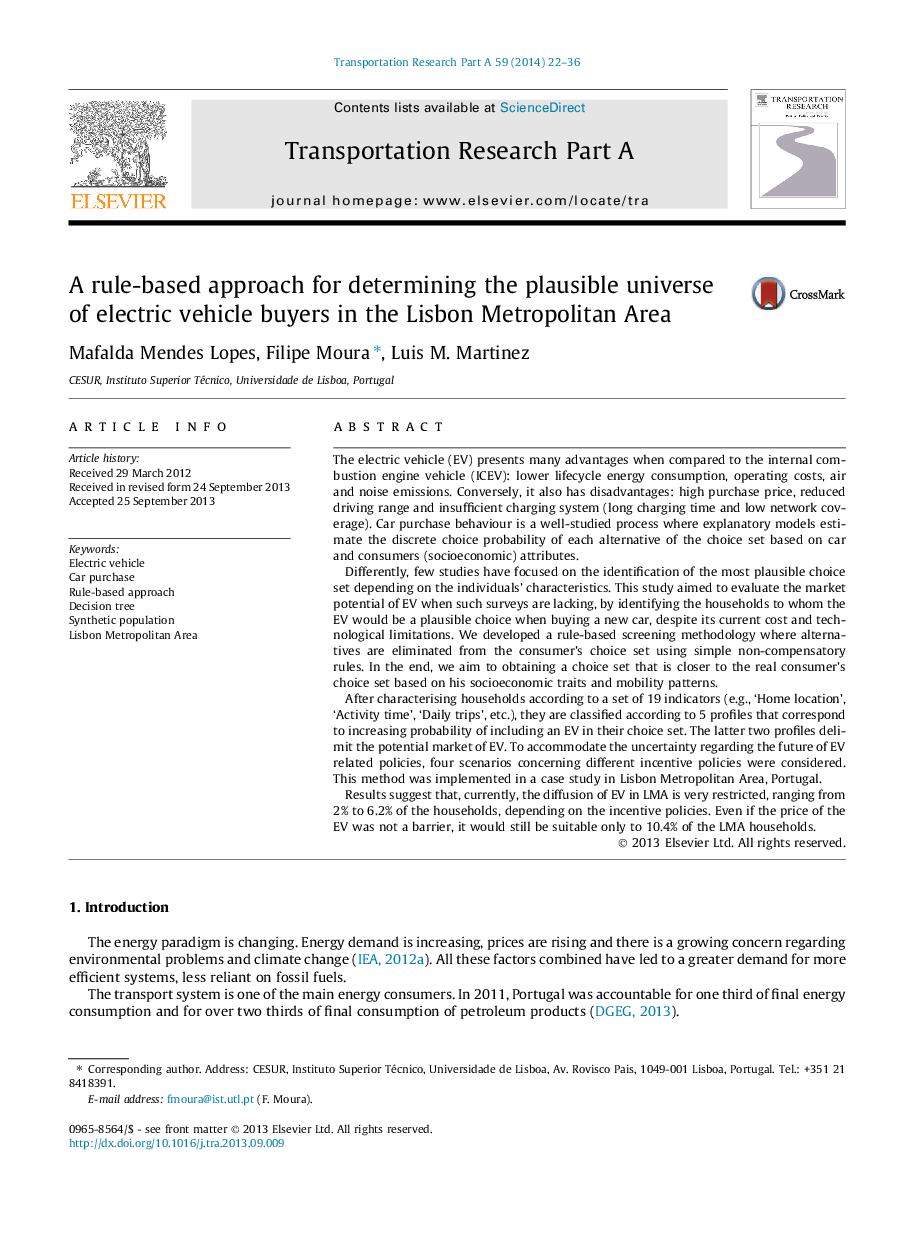| کد مقاله | کد نشریه | سال انتشار | مقاله انگلیسی | نسخه تمام متن |
|---|---|---|---|---|
| 311239 | 533782 | 2014 | 15 صفحه PDF | دانلود رایگان |

• We develop a rule-based screening methodology to define a car consumer’s choice set.
• We identify the households who may include EVs in their choice set.
• We analyse the impact of public policies on the potential diffusion of EVs.
• This methodology is useful as a tool to support transport policy decision making.
The electric vehicle (EV) presents many advantages when compared to the internal combustion engine vehicle (ICEV): lower lifecycle energy consumption, operating costs, air and noise emissions. Conversely, it also has disadvantages: high purchase price, reduced driving range and insufficient charging system (long charging time and low network coverage). Car purchase behaviour is a well-studied process where explanatory models estimate the discrete choice probability of each alternative of the choice set based on car and consumers (socioeconomic) attributes.Differently, few studies have focused on the identification of the most plausible choice set depending on the individuals’ characteristics. This study aimed to evaluate the market potential of EV when such surveys are lacking, by identifying the households to whom the EV would be a plausible choice when buying a new car, despite its current cost and technological limitations. We developed a rule-based screening methodology where alternatives are eliminated from the consumer’s choice set using simple non-compensatory rules. In the end, we aim to obtaining a choice set that is closer to the real consumer’s choice set based on his socioeconomic traits and mobility patterns.After characterising households according to a set of 19 indicators (e.g., ‘Home location’, ‘Activity time’, ‘Daily trips’, etc.), they are classified according to 5 profiles that correspond to increasing probability of including an EV in their choice set. The latter two profiles delimit the potential market of EV. To accommodate the uncertainty regarding the future of EV related policies, four scenarios concerning different incentive policies were considered. This method was implemented in a case study in Lisbon Metropolitan Area, Portugal.Results suggest that, currently, the diffusion of EV in LMA is very restricted, ranging from 2% to 6.2% of the households, depending on the incentive policies. Even if the price of the EV was not a barrier, it would still be suitable only to 10.4% of the LMA households.
Journal: Transportation Research Part A: Policy and Practice - Volume 59, January 2014, Pages 22–36